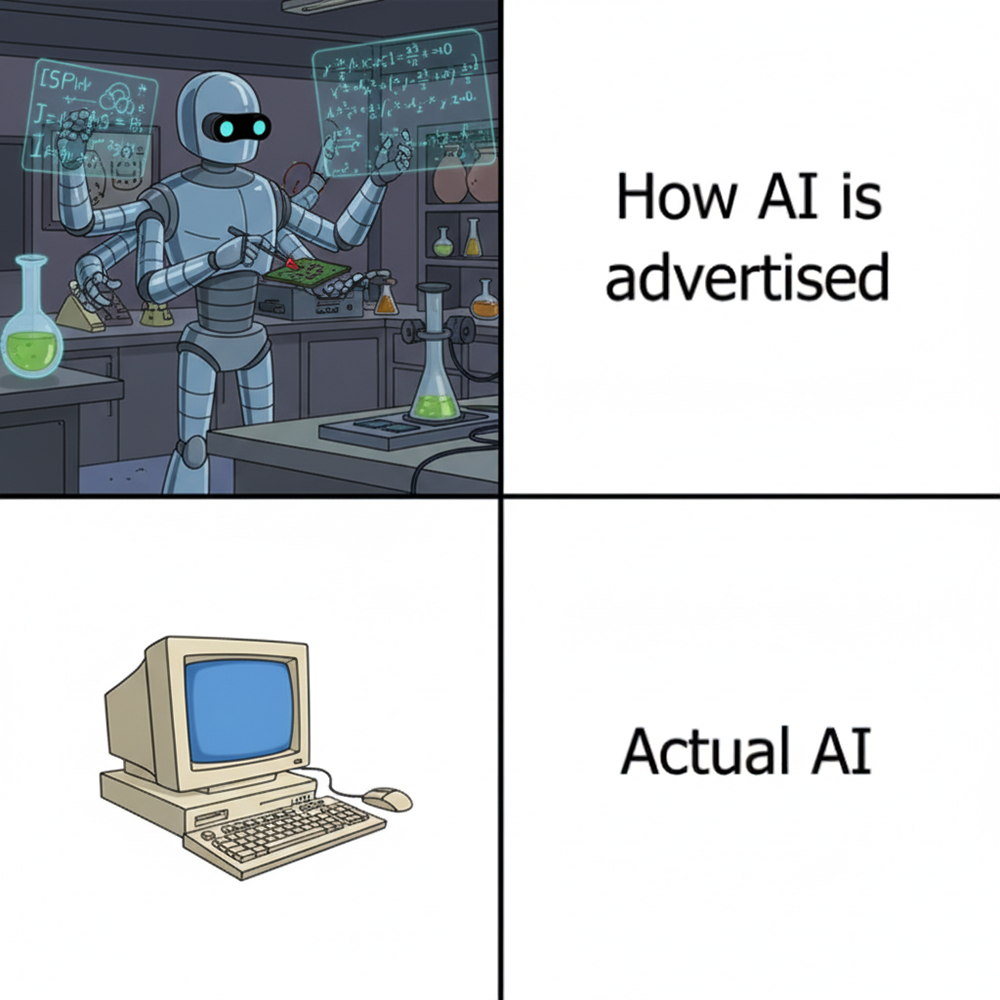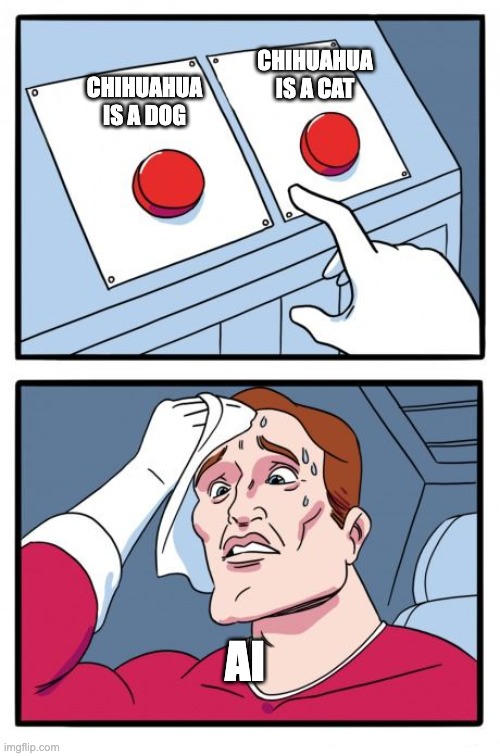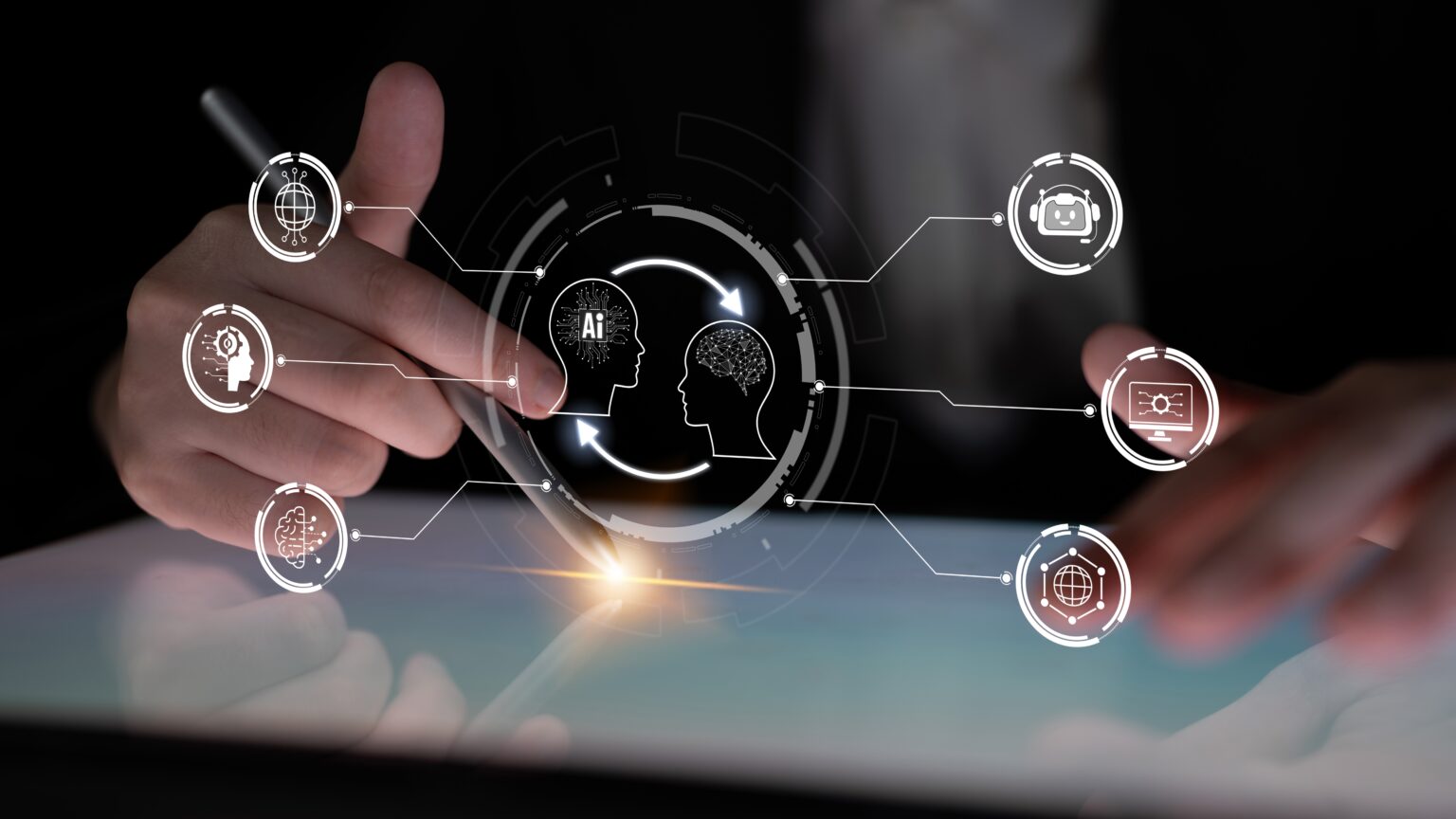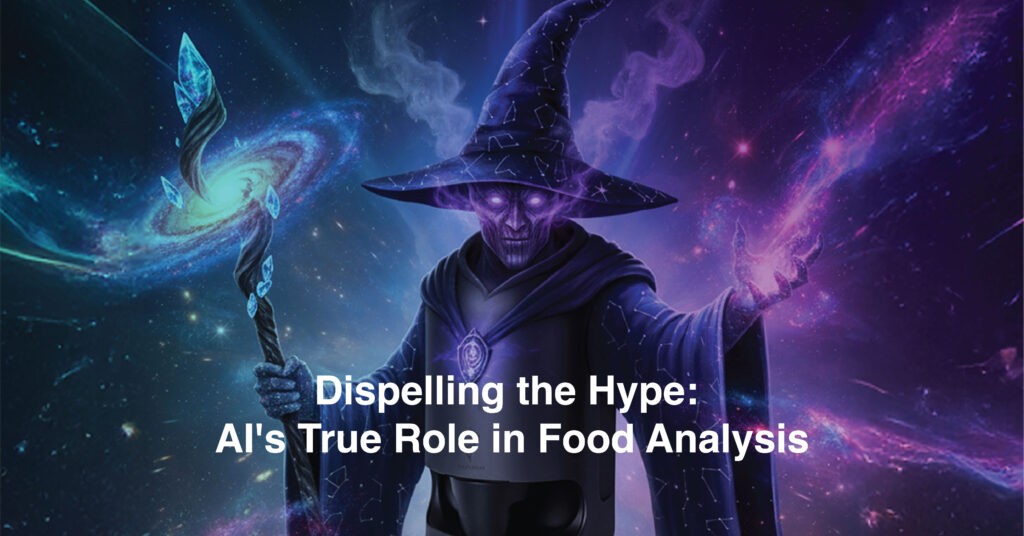Myths and Realities of AI in Food and Ingredient Analysis: Why Human Expertise Still Matters

In this age of artificial intelligence (AI), applications of AI are increasing daily, and it is also the same in the food and ingredient industries. AI systems can analyse ingredient samples faster than ever before, predict food quality with impressive accuracy, ascertain origin and traceability confidently, and process vast amounts of data in ways that would take humans weeks to accomplish. But alongside these genuine advances, several myths have taken root that create unrealistic expectations about what AI can deliver.
In this article, we shall discuss and debunk these myths, and in what may be the “crumbling of dreams”, offer solutions that pave the way towards a more sustainable cooperation between man and machine.
The Three Big AI Myths in Food and Ingredient Analysis
Myth #1: AI is Magic

Generative AI and its ability to generate human-like content seem almost magical to the uninitiated person. In other spaces, we also hear cases on how machine learning models can predict stock prices better than humans. However, AI remains a sophisticated system of logic and pattern recognition, not magic. At its core, AI learns from various types of data to identify patterns and make predictions. Such data ranges from subjective measures, such as sensory evaluations, to more objective ones, such as readouts from analytical instruments like spectrophotometers. Just like a highly trained quality control specialist learns to recognise good ingredients from experience, AI builds its knowledge from the provided data.
The key difference is that while a human expert understands why an ingredient is high quality, AI predicts based on patterns it has learned to associate with quality outcomes. Unfortunately, it does not truly understand the underlying science of what makes food good. This critical point leads us to the next myth, that when AI is presented with information even slightly different to what they have seen previously, the predictions may be unexpected and at times, inaccurate.
Myth #2: AI can be 100% Accurate

There are three important aspects to address here: extrapolation, subjectivity, and completeness of data.
Firstly, many AI systems must be trained on a training dataset, and they are often limited by what has been represented in that dataset. When presented with data it has not seen before, AI has to extrapolate; to infer based on limited information, and this is where many AI systems falter. For example, an AI that has only been trained to recognise large dogs only may classify a small poodle as a cat.
Secondly, AI learns from patterns. Therefore, it typically excels at tasks that are objective in nature, such as predicting the moisture content of a particular type of cocoa powder. Where tasks involve subjectiveness, especially when analysing complex food products with multiple components, interacting flavours, or textural qualities such as “mouthfeel”, error rates increase significantly as AI is often unable to capture emotional nuances from its data. To complicate matters, humans may not always agree even among themselves when it comes to subjective data due to personal biases from culture, experience, and demographics. Since humans are already in disagreement, it is reasonable to propose that the AI’s predictions will also meet with disagreement from their human assessors.
Thirdly, humans can assimilate and integrate various data types into our decisions on the fly. For example, if we see a dog that looks like a cat, by hearing it bark, we can immediately correct our original evaluation and conclude that it is indeed a dog. Similarly, we may change our notion of an ingredient grade based on, perhaps, the recent supply crunch, where we decide to loosen our grading criteria to accept sufficient stock. This decision could be made for just this instance, with no precedence. Unlike humans, an AI can’t learn on the fly and integrate data easily and smoothly as we do; it needs to be taught first using data. This creates a disagreement between human and machine, where the AI has already been disadvantaged significantly.
Myth #3: AI Can Replace Human Jobs

Having discussed the above two myths, despite the hype on social media about how AI will be making various jobs redundant, there are limitations to this.
Within a defined scope, AI excels at handling routine, repetitive assessments, but human expertise remains irreplaceable for complex decision-making and boundary cases. AI can be a highly capable assistant that quickly screens through hundreds of samples and flags potential issues, but humans are still needed to make final judgments, especially when dealing with:
- Decisions made in changing business environments where decision boundaries are shifting
- Known changes in the analysed material which is outside of what AI has learnt from
- Situations where regulatory compliance or safety decisions are involved
- Cases where the AI’s confidence is low or results seem inconsistent
The Human-in-the-Loop Approach: The Best of Both Worlds

Rather than replacing humans, the most effective AI systems in food analysis employ a “human-in-the-loop” approach. One of the most significant pain points in the food industry is throughput. The volume of material is often high in both trading and manufacturing work, but conventional analyses, whether by human sensory evaluations or human-operated chemical analyses, are relatively slow and create a bottleneck. With AI, higher throughput is enabled by allowing AI to take quick, unambiguous decisions while providing information to human experts, especially in edge cases where the decisions are complex and demand real-life experience. This mode of partnership leverages the following strengths to reap greater business value:
AI Strengths:
- Processing large volumes of samples quickly and consistently
- Identifying patterns across complex datasets that humans might miss
- Working 24/7 without fatigue or subjective variation
Human Strengths:
- Understanding context to make final decisions for edge cases
- Recognising when something unusual requires investigation
- Adapting to new situations without prior knowledge or experience.
- Making ethical and strategic business decisions based on quality results
Why Perfect Agreement Isn’t the Goal
Just as two humans may not necessarily agree on the sensory evaluation of a sample and its subsequent grading decision, AI and human assessments won’t always align perfectly either. It is tempting to dismiss this as a ‘misprediction’, a failing of AI. However, this is actually valuable information.
When AI and human experts disagree, it often reveals important insights:
- The AI might be picking up characteristics of the sample that humans can’t perceive
- Human experts might be picking up on contextual factors the AI missed, which may alert the formal to shifts in quality or perception of quality
- The disagreements might highlight edge cases that need more investigation
The goal isn’t perfect agreement or accuracy; it is using both perspectives to make better overall decisions about food quality.
Setting Up for Success
For businesses considering AI-powered food analysis, it’s crucial to set appropriate expectations from the start. AI is a powerful tool that can significantly improve the speed, consistency, and scalability of quality control processes. However, implementing AI effectively requires:
1. Clear Scope, Time and Resources
For businesses considering AI-powered food analysis, it’s crucial to set appropriate expectations from the start. AI is a powerful tool that can significantly improve the speed, consistency, and scalability of quality control processes. However, implementing AI effectively requires:
2. Quality Data
AI systems need high-quality, diverse datasets to perform well. Poor quality or biased training data will lead to poor AI performance. Training AI systems also provides a valuable opportunity to examine current quality processes, often leading to improvements.
3. Human Expertise
AI systems work best when guided by domain experts who understand both the technology’s capabilities and the specific challenges of food analysis. A clear decision workflow involving AI and human experts at different but complementary points is essential. For example, AI may be used to flag out ambiguous cases during evaluation, and these samples are then sent to human experts for confirmation and root cause analysis.
4. Continuous Monitoring
Like any analytical tool, AI systems need regular re-training and validation to maintain accuracy over time. This also keeps them up to date with any shifts in the business environment that the human experts may have internalised in their decision-making.
LEARN MORE
ProfilePrint’s early release in 2024 for key clients in Brazil and China has yielded promising results. Stay tuned for updates on our latest development as we pioneer the world’s first commercial A.I. solution for NVD detection in 2025. To learn more about how our NVD solution can elevate your coffee business, contact us for a demonstration.

